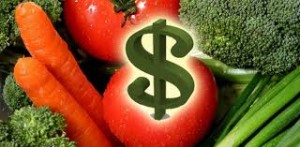
As someone in the healthcare industry that sees a lot of people from all walks of life everyday I find it fascinating the people who come to the office looking aged and the people who come to the office looking healthy. With roughly 100 trillion cells in our body that are constantly regenerating and replacing themselves it is vital that the blueprint in which these cells replace are from a healthier model. The number 1 factor I see when I look at people who look older than their age comes down to one common factor: stress. Stress from work, poor nutrition, over-training, relationships, and other factors that are rapidly aging their body.
Since we will all age and anti-aging is impossible (until Big Pharma finds a drug for that) then for now we will discuss 3 powerful strategies to aging prematurely.
Strategy 1 – Maximize Sulfur Intake
If you have ever studied “anti-aging” and looked into the research then most of it shows how beneficial sulfur intake will be to the body. Behind calcium and phosphorous, sulfur is the 3rd most abundant mineral in the body which has been overlooked. Sulfur is found in our muscles, skin, and bones and is also beneficial in keeping protein bonds strong. Within connective tissue and cartilage are proteins that have flexible sulfur bonds. As we age our connective tissue and cartilage lose its elasticity and people will notice their arms and legs becoming sagged, wrinkled skin, and tight joint muscles. People who eat food high in sulfur are increasing the likelihood of maintaining tough protein bonds to decrease their tissue from becoming sagged, wrinkles within the skin, as well as reduced pain from tight joints.
Doctor’s Point – In every meal I am always looking for ways to increase sulfur as my goal is to maintain the bonds with proteins and keep my skin tight. Here are the foods I eat regularly that are high in sulfur: Kale, cabbage, cauliflower, broccoli, garlic, onion, organic pastured eggs, brussel sprouts, , raw cheese, raw grass-fed milk (Amasai).
Strategy 2 – Get Adjusted
In the reactive World we live in most people tend to only seek chiropractic care when they have neck or back pain. Those who are forward thinkers and live a progressive and proactive life tend to understand the true value of chiropractic and maintaining a healthy nervous system. The brain and spine regulate and coordinate all function in the body and by ruining it with physical workouts, poor posture, sleeping improperly, and lack of maintenance can decrease the communication in the body. I have seen people who eat paleo or primal and work out regularly but they still have significant digestive problems because they had a scoliosis blocking the communication to the digestive tract. I am not saying chiropractic would cure their digestive problem however it would allow their body to function more properly and aid in the digestive process.
When it comes to premature aging the hallmark study for chiropractic came in 2005 with the Journal of Vertebral Subluxation (JVSR). The researchers looked at the level of antioxidants within the body for people who had long term chiropractic care (2 years +), short term chiropractic care, and people who have no chiropractic background. The antioxidant focus was on serum thiols which act to destroy free radicals within the body that speed up aging and show up due to stress. A 2003 study published by the Journal of Anti-Aging Medicine showed people with low serum thiol levels had increased sickness and disease. The study in JVSR studying chiropractic and serum thiols demonstrated that people who follow through with long term chiropractic have an increase in serum thiol levels. Chiropractor Dr. Christopher Kent explained: ‘Oxidative stress, metabolically generating free radicals, is now a broadly accepted theory of how we age and develop disease.’
‘Going through life,’ he adds, ‘we experience physical, chemical and emotional stress. These stresses affect the function of the nervous system. We hypothesized that these disturbances in nerve function could affect oxidative stress and DNA repair on a cellular level.’
‘Chiropractic care appears to improve the ability of the body to adapt to stress,’ concluded Kent.
Doctor’s Point – I have been regularly seeing a chiropractor for the past 8 years on a weekly basis. Our office in Atlanta focuses on structural correction meaning it finds where there is abnormal structure in the body and corrects it through specific and unique techniques. I went through this process my first 6 months under chiropractic care to correct the curves within my spine and now I show up for weekly maintenance check-ups which only take 5 minutes. If you are looking for a chiropractor that focuses on structural correction please place your zipcode in the comments section below.
Strategy 3 – Become a MVP
M – Meditate
V – Visualize
P – Purpose
As the technology era keeps progressing and more people sit in front of computers for hours upon hours at a time it is crucial to take time away and relax the body and mind. Some of us keep our body in a state of fight or flight and we wonder why we have difficult sleeping, anxiety, digestive problems, high blood pressure, and other symptoms associated with high levels of stress. A common piece I notice from many successful people that seem very relaxed is how they care for themselves and focus on MVP.
The first step would be meditating and actually calming the body and bringing it’s wave frequency down. This step is difficult for many people as they cannot sit still for more than 5 minutes nor clear their head for 5 seconds. My favorite technique is called Guided Meditation where I sit somewhere quiet, open up YouTube on my phone, put headphones in, and listen to a guided mediation for 5-10 minutes. There are many different ones on YouTube but type in exactly what you want and there is sure to be the right fit for you: guided meditation sleep, guided meditation prosperity, guided meditation relax, and guided meditation awake are a few examples you could use.
The second step in the MVP process is visualizing. If you ask someone what they DO NOT want for their life they can usually give you a laundry list of things they are not looking for. However, when you ask what they do want very few can be crystal clear. Since the brain is great at seeing and attracting pictures I like to sit for a couple minutes after my meditation and visualize my day and exactly how I want it to show up. I want to see happy and healthy people coming to my office and referring friends and family, my staff excited and pumped to be there to change lives, heading to meals with my wife and discussing our day, building networks within my community of healthy and happy individuals, and powerful workout sessions of constant personal records (PR). Following the meditation I listen to an instrumental song that gets me fired up and allows me to visualize the amazingness that is going to happen in my day.
The final step of MVP is becoming crystal clear on your purpose and analyze your life to see if you are living it. Sit down for a couple hours and write out exactly what your purpose is and see how congruent you are in your daily life with this purpose. It can be difficult to write this out the first time so once you complete this step I would be happy to read it and make any comments. Also, if you would like to see mine as an example then I must first see yours to see how serious you are and then we can go from there. My e-mail is ACohenDC@gmail.com and I can be reached at any time. If you have already written yours it would be great if you can share it in the comments section below for others to have as a reference.
Doctor’s Point – Every morning I spend roughly 10 – 15 minutes getting my day started on the right foot and making sure I am in the right state of mind. If you have trouble remembering there are apps for the phone you can download that remind you of tasks you need to do before going to bed. My favorite is “Way of Life”



